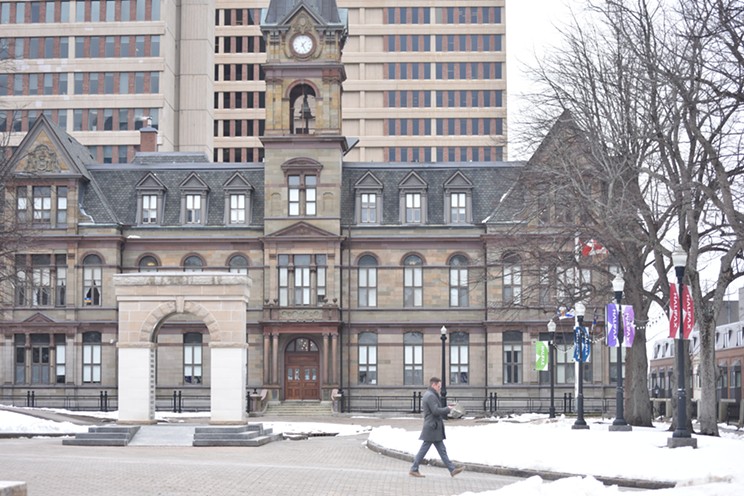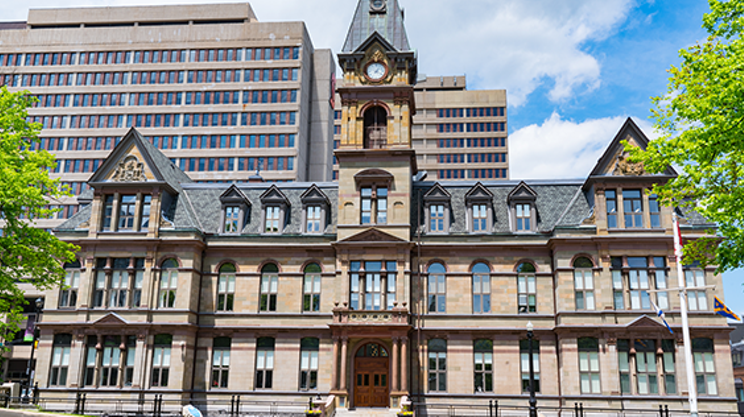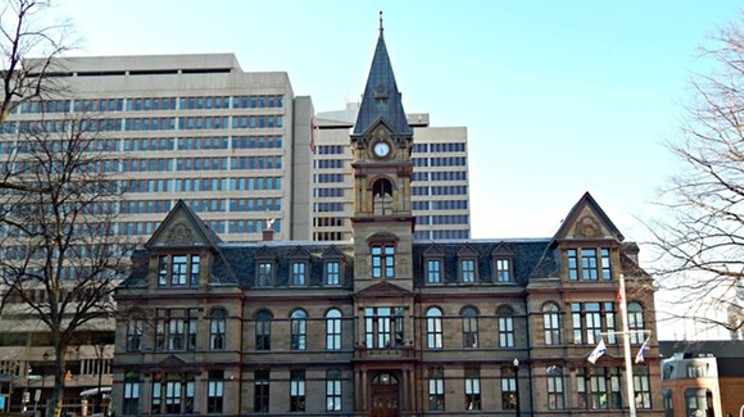The city’s final regular-season budget meeting was bleak. Fire chief Ken Stuebing often has depressing updates for HRM council, all of which generally revolve around the theme that Halifax’s growth has so far been unsustainable for his department. Stuebing spent a lot of time explaining how this is apparent in his department’s response time.
Essentially, if there are a lot of fires in the urban parts of the HRM, the department’s performance metrics go up. If there are a lot of fires in Sackville, which there were last year, the response times got worse. Could the fire department get to your home in time in Sackville last year? Not usually.
Stuebing also told council those response times are based on single-family houses. Single-family homes are statistically the lowest fire risk. One structure, one large lot and strict building codes combine to make fires in single-family suburban homes the “easiest” type of fire to put out and contain. That is the safety standard that response times are based on.
Stuebing told council to look around at what Halifax is building. If a high-rise catches fire, it would require almost every firefighter on duty in the “urban core,” which, in fire fighting jargon, includes Bedford, Cole Harbour and Sackville responding. The fire department is not able to meet basic industry safety standards unless it only has to meet the lowest, unsafest one.
“I don't want people to say we aren't keeping up with growth; we sure as heck are,” said mayor Mike Savage in this Wednesday’s continuation of last Wednesday’s budget committee meeting. But if Bedford doesn't have a fire station, if Sackville is at a greater risk of fire and if the fire department can't adequately respond to high-rise fires, then Savage’s assertion is simply incorrect. The city has not kept up with growth.
Stuebing was kinder to Savage, saying that, yes, the city has invested a lot, but there was a gap in funding before this council, and this council’s large investment hasn't closed the gap.
When Strong Towns first labelled suburban development as a Ponzi scheme undermining all of North America, it sounded insane. But more than in any other departmental budgets, the scheme is most evident in the fire department’s.
Since no one wants to die in a fire, we all agreed that fire departments are a public good worth having. So the fire department is a public safety service funded by the municipality. The municipality’s main way to raise public funds to provide public services like fire safety is through regulating land use. The city almost exclusively raises these public funds with fees and taxation pertaining to how land is used or owned. Developers, real estate investment trusts and the whole for-profit real estate industry make money off this land use, and in exchange pay those fees and taxes. In 2022, even though Canada’s GDP grew by roughly 1%, real estate made up 20% of that growth. Real Estate in Nova Scotia is roughly 17% of our GDP. The city captures its share of that GDP when people or companies pay the city fees and taxes to develop land, own, build, lease and rent buildings. In Nova Scotia, for-profit real estate companies own roughly 30% of the real estate market. And the Canadian Real Estate Investment Network boasts that its members have made $5.4 billion in profits. But somehow, the city doesn’t have enough money to meet fire safety standards?
City councillors are now starting to ask questions about how to close this mystery huge-money-in-real-estate-no-money-in-government tax revenue gap. Councillor Patty Cuttell has noted that, in her district, growth has not paid for growth as promised, and she wanted to know what the city can do to fix it.
Councillor Waye Mason didn't think this debate was appropriate for budget committee, and he's right. The debate about the fire budget that happened in the budget committee had very little to do with city finances and everything to do with whether the city was able to meet its current public safety standards with the current level of funding. Mason says the fire department has the safety standards the city wants it to meet, and it should present council with a budget to meet those standards. Then let council makes those cuts. Although, based on what’s required for one high-rise fire, that budget would likely be much, much higher than the current fire department budget. Mason also told his colleagues that this type of debate—about service standards—should be part of a different process.
Fun fact: The board of police commissioners is also supposed to do this type of detailed service delivery debate with the police budget—but they didn’t.
CAO Cathie O’Toole agreed with Mason, telling council that the upcoming regional plan review would be a better place to discuss fire service standards. Later in the meeting, councillor Cuttell reminded her colleagues that there are municipal planning strategies (and the suburban planning strategy on the budget adjustment list) coming down the pipe that are very good places to address the lack of adequate fire infrastructure. Because ultimately, this is not a financial issue; it’s a city planning issue. Suburbs are not designed for adequate fire response. Suburbs are not designed for fiscal sustainability. Suburbs are killing the planet. Suburbs are making us depressed and lonely.
It is really starting to seem like calling suburbs a Ponzi scheme is far less insane than continuing to build out unsustainable, car-dependent suburban sprawl, which is turning out to be a colossal climate-change-inducing mistake. Luckily it’s a mistake that council is urgently trying to fix, although urgent by Canadian political standards usually means years away from reality. But this urgency is why councillor Cathy Deagle Gammon asked her colleagues to skip the budget adjustment list and add more fire capacity straight onto the city budget. Council agreed, and so Middle Musquidobit fire station will become a 24/7 career/volunteer hybrid station at a cost of $137,100.
Mason also wanted to know if the city can run unofficial ambulances. It’s not something the city is supposed to do, or is even probably legally allowed to do, hence unofficial. But Mason told his colleagues that if the choice is to let people die, or try and prevent people from dying, the choice is pretty clear. Stuebing says it’s a good idea but would require more people, and council may do more on this in the future.
And with that final debate, the fire budget passed. The fire department’s budget is up 8.1% for a total of $84,588,600.
Council will be back for budget playoffs, AKA the budget adjustment list debate, on March 29.


















